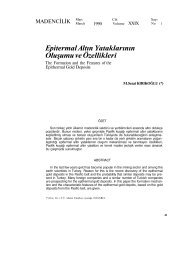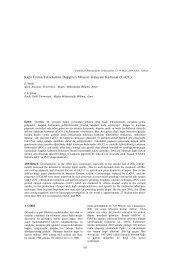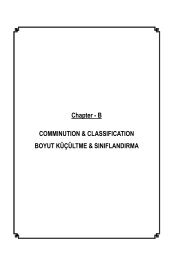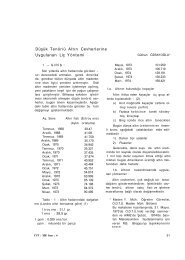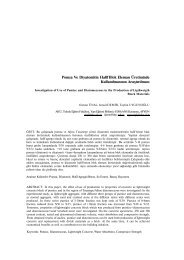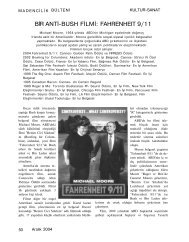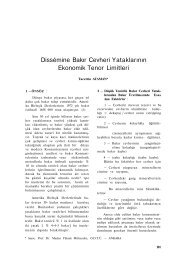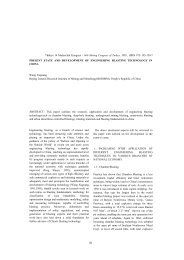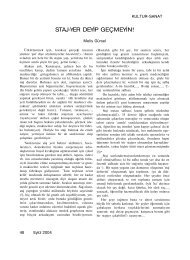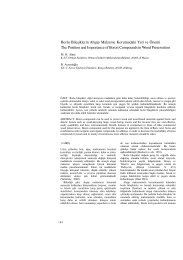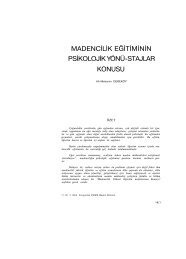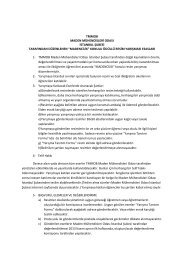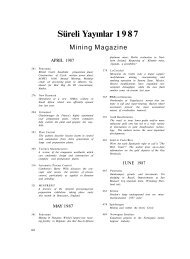Huttagosol, P., & Cameron, R., 1992. A computer design of ultimate pit limit by using transportation algorithm, Proc. 23th Int. APCOM, pp.443-460. Huy, P. N. A., San, C. T. B., &Triantaphyllou, E., 2004. Solving integer programming problems using a genetic algorithm approach, Proceedings of ICEIC, Ha Noi, Viet Nam, 5 pages. Johnson, T. B., 1968. Optimum open pit mine production scheduling, PhD thesis, Operations research department, Uni. of California, Berkeley, C.A. Johnson, T. B., & Sharp, W. R., 1971.A 3-D dynamic programming method for optimal ultimate open pit design, U.S. Bureau of Mines, Report of investigation 7553. Kim, Y. C., 1979. Open pit limits analysis: technical overview, Computer methods for the 80's in the mineral industry, A. Weiss (ed.), AIME, New York, pp.297-303. Koenigsberg, E., 1982. The optimum contours of an open pit mine: an application of dynamic programming, Proc. 17th Int. APCOM, pp. 274- 287. Lerchs, H., & Grossmann, I., 1965. Optimum design of open-pit mines, Canadian Mining and Metallurgical Bulletin, 58, pp. 17–24. Meagher, C., Sabour, S. A. A., & Dimitrakopoulos, R., 2009. Pushback design of open pit mines under geological and market uncertainties, Proc. of Orebody Modelling and Strategic Mine Planning, Spectrum Series, pp.16 - 18. Meyer, M., 1969.Applying linear programming to the design of ultimate pit limits, Management Science, vol. 16, pp.B121- B135. Mol, O., &Gillies,S.,1984. Cutoff grade determination of mines producing direct shipping iron ore, Proc. of Australasian Institute of Mining and Metallurgy, No. 289, November/December 1984, pp.283-287. Muir, D. C. W., 2004. Pseudoflow, new life for Lerchs-Grossmann pit optimisation, Proc. of Orebody Modelling and Strategic Mine Planning, pp.113-120. Newman, A. M., Rubio, E., & Caro, R., Weintraub, A., &Eurek, K., 2010. A review of operations research in mine planning, Interfaces, 40(3), pp.222-245. Olivetti, F. F., 2003. Solving integer programming problems using genetic algorithms, website http://ai-repot.com/Articles/48/Programming.html Osanloo, M., Rahmanpour, M., & Sadri, A. 2010. Ultimate pit limit of iron ore mines using maximum flow algorithms, Proc. MPES 2010, FREMANTLE: AusIMM, pp.81-87. Rahmanpour, M., & Osanloo, M., 2012. Pit limit determination considering blending requirements. Proc. of 21st International Symposium on Mine Planning & Equipment Selection (MPES), New Delhi, India, pp.564-572. Picard, J. C., 1976. Maximal closure of a graph and application to combinatorial problems, Management Science, 22, pp.1268-1272. Qin, A. K., Huang, V. L., &Suganthan, P. N., 2009, Differential evolution algorithm with strategy adaption for global numerical optimization, IEEE transactions on evolutionary computation, Vol. 13, No. 6, pp. 398-417. Srinivasan, S., & Whittle, D., 1996. Combined pit and blend optimization, SME Annual Meeting, Phoenix, Arizona, March 11-14, Preprint 96-69, 5 pages. Storn, R., & Price, K., 1997. Differential evolution- optimization over continuous spaces, J. Global Optimiz., vol. 11, pp.341–359. Underwood, R., &Tolwinski, B., 1998. A mathematical programming viewpoint for solving the ultimate pit problem, European J. of Operational Research, 107, pp.96-107. Whittle, D., &Bozorgebrahimi, A., 2004. Hybrid Pits - linking conditional simulation and Lerchs- Grossmann through set theory, Proc. of Orebody Modelling and Strategic Mine Planning, Spectrum Series Vol. 14, pp.323-328. Yegulalp, T. M., & Arias, A. J., 1992.A fast algorithm to solve the ultimate pit limit problem, Proc. 23th Int. APCOM, pp.391-397. Zhao, Y., & Kim, Y. C., 1992.A new optimum pit limit design algorithm, Proc. 23th Int. APCOM, pp.423-434. 128
23 rd Selecting the Suitable Haulage System Using HPVS Method, Considering Sustainable Development Concepts M. Jamshidi, M. Osanloo Department of Mining and Metallurgy, Amirkabir University of Technology (Tehran Polytechnic), Tehran, Iran ABSTRACT Transportation costs have always been a significant part of large open pit mining capital and operating costs. It counts about 40 up to 60 percent of the total operating cost in open pit mining. The main goal of design a haulage system is an implementation of a plan that meets the required production requirements, operates at competitive cost, and complies with environmental regulations. Selecting the suitable haulage system can be considered as a MADM problem because the effective parameter are various, with different importance. In this study, the HPVS method that uses a DEA model to produce weights associated with each ranking place was applied to select the suitable haulage system considering sustainable development (SD) concept. This approach was tested in Sarcheshmeh copper mine of Iran. The result of this model shows that the combination of truck-shovel and in-pit crusher is as the most appropriate haulage system in Sarcheshmeh copper mine. 1 INTRODUCTION One of the main proportions of operating cost of open pit mining is related to haulage capital and operating costs. Currently, truck with 360-ton capacity is running in some open pit and some researcher give indication to the employment of 420-ton capacity truck (Jacek, Zaplicki, 2009). The capital cost of truck with capacity around 300 ton reach above 2.5 million US $. Therefore, equipment selection is one of the most important aspects of open pit mine planning and design. The purpose of equipment selection is to select optimum size and number of equipment with minimum cost (Osanloo, 2007). The selection of equipment for mining applications is not a well-defined process, because it involves the interaction of several subjective factors or criteria, decision on mine equipment selection in different mines are often complicated and may even embody contradictions. Different types of models have been developed to selecting the suitable mining equipment. Expert system as decision aid in surface mine equipment selection was applied by Bandopadhyay, et al. (Bandopadhyay et al 1987) and Denby, Schofield (Denby, Schofield 1990). Hrebar (Hrebar 1990), Sevim and Sharma used net present value analysis for selection of a dragline and surface transportation system (Sevim, Sharma 1991). Cebesoy used linear break-even model (Cebesoy 1997). Models for equipment selection and evaluation described by Celebi were aimed at selection of the equipment fleet based on minimizing the unit stripping cost and maximizing production (Celebi 1998). Hall et al. illustrated how reliability analysis can provide mine management with quantitative information of value for decision making about surface mining equipment (Hall et al. 129
- Page 1 and 2:
Chapter - A OPEN PIT MINING
- Page 3 and 4:
23 rd Electric Drive Mining Class
- Page 5 and 6:
23 rd change out at defined interv
- Page 7 and 8:
23 rd D f = Fuel Density A typical
- Page 9 and 10:
23 rd Gold-Mining and Ornamental S
- Page 11 and 12:
23 rd greywackes and conglomerates
- Page 13 and 14:
23 rd petrographic assemblages are
- Page 15 and 16:
23 rd two main pudding layers met
- Page 17 and 18:
23 rd (mortars and mills), made wi
- Page 19 and 20:
23 rd Associazione Lombarda di Arc
- Page 21 and 22:
23 rd
- Page 23 and 24:
23 rd
- Page 25 and 26:
23 rd
- Page 27:
23 rd
- Page 30 and 31:
30
- Page 32 and 33:
32
- Page 34 and 35:
34
- Page 36 and 37:
36
- Page 38 and 39:
38
- Page 41 and 42:
23 rd
- Page 43 and 44:
23 rd
- Page 45 and 46:
23 rd
- Page 47 and 48:
23 rd
- Page 49 and 50:
23 rd
- Page 51 and 52:
23 rd
- Page 53 and 54:
23 rd
- Page 55 and 56:
23 rd
- Page 57 and 58:
23 rd
- Page 59 and 60:
23 rd
- Page 61 and 62:
23 rd
- Page 63 and 64:
23 rd
- Page 65 and 66:
23 rd
- Page 67 and 68:
23 rd
- Page 69 and 70:
23 rd
- Page 71 and 72:
23 rd
- Page 73 and 74:
23 rd
- Page 75 and 76:
23 rd
- Page 77 and 78: 23 rd
- Page 79 and 80: 23 rd
- Page 81: 23 rd
- Page 84 and 85: analisys degradation and erosion ri
- Page 86 and 87: 3 METHOLOGICAL APPROACH AND EQUIPME
- Page 88 and 89: Figure 3. The UAV multirotor platfo
- Page 90 and 91: Table 2. Final results of data proc
- Page 93 and 94: 23 rd
- Page 95 and 96: 23 rd
- Page 97 and 98: 23 rd
- Page 99 and 100: 23 rd
- Page 101 and 102: 23 rd
- Page 103 and 104: 23 rd
- Page 105 and 106: 23 rd Ultimate Pit Limit Design on
- Page 107 and 108: 23 rd Figure 1 shows the procedure
- Page 109 and 110: 23 rd Figure 4. UPL of the sample
- Page 111 and 112: 23 rd Efficient Real Time Stabilit
- Page 113 and 114: 23 rd stripping ratio of 2.28:1 to
- Page 115 and 116: 23 rd The broad area coverage make
- Page 117 and 118: 23 rd 4 FINAL REMARKS Slope monito
- Page 119 and 120: 23 rd A Genetic Algorithm for Pit
- Page 121 and 122: 23 rd every ore block and searches
- Page 123 and 124: 23 rd BS. The mathematical model o
- Page 125 and 126: 23 rd producing the new vector x i
- Page 127: . 23 rd Figure 6. Ultimate pit lim
- Page 131 and 132: 23 rd Environment Economy Society
- Page 133 and 134: 23 rd shape and depth of deposit,
- Page 135 and 136: 23 rd 6 THE HIERARCHICAL PREFERENC
- Page 137 and 138: 23 rd ranking place Truck & Shovel
- Page 139 and 140: 23 rd Noguchi H., Ogawa M., Ishii
- Page 141 and 142: 23 rd An Approach to Determine the
- Page 143 and 144: 23 rd material to the nearby dumps
- Page 145 and 146: 23 rd network and allocating spoke
- Page 147 and 148: 23 rd IPC unit, but this is not wi
- Page 149 and 150: 23 rd REFERENCES Alumur, S. A., &
- Page 151 and 152: 23 rd
- Page 153 and 154: 153 23 rd
- Page 155 and 156: 23 rd
- Page 157 and 158: 23 rd
- Page 159 and 160: 23 rd
- Page 161 and 162: 23 rd
- Page 163 and 164: 23 rd
- Page 165 and 166: 23 rd In - Pit Crushing and Convey
- Page 167 and 168: 23 rd According to Lopes, the bigg
- Page 169 and 170: 23 rd trucks because the conveyor
- Page 171 and 172: 23 rd Identification of Causal Rel
- Page 173 and 174: 23 rd Table 1. Geotechnical charac
- Page 175 and 176: 23 rd 3.7 Results and Discussion T
- Page 177 and 178: 23 rd Using Satellite Images (ASTE
- Page 179 and 180:
23 rd largely covered by Quaternar
- Page 181 and 182:
23 rd this figure, the lithology u
- Page 183 and 184:
23 rd Figure 6. ASTER satellite im
- Page 185 and 186:
23 rd mineralization in the sanand
- Page 187 and 188:
23 rd Gas Pollutants and Dust of T
- Page 189 and 190:
23 rd Figure 2. Truck transport th
- Page 191 and 192:
23 rd Table 4. Determined values o
- Page 193 and 194:
23 rd 4 DISCUSSION The results of
- Page 195 and 196:
23 rd Surface Mining Statistics in
- Page 197 and 198:
23 rd Dinogetia (Garvan). The chal
- Page 199 and 200:
23 rd Table 1. The surface mining
- Page 201 and 202:
23 rd pits along the Crisu Negru,
- Page 203 and 204:
23 rd Voda, Nisipari, Rasova, Sili
- Page 205 and 206:
23 rd 5.2 Magmatic rocks exploitat
- Page 207 and 208:
23 rd mountains) and north Dobroge
- Page 209 and 210:
23 rd Ponor quarry), sulphur (Nego
- Page 211 and 212:
23 rd
- Page 213 and 214:
23 rd
- Page 215 and 216:
23 rd
- Page 217 and 218:
23 rd
- Page 219 and 220:
23 rd
- Page 221 and 222:
23 rd
- Page 223 and 224:
23 rd
- Page 225 and 226:
23 rd
- Page 227 and 228:
23 rd
- Page 229 and 230:
23 rd
- Page 231 and 232:
23 rd
- Page 233 and 234:
23 rd
- Page 235 and 236:
23 rd
- Page 237 and 238:
23 rd
- Page 239 and 240:
23 rd
- Page 241 and 242:
23 rd



